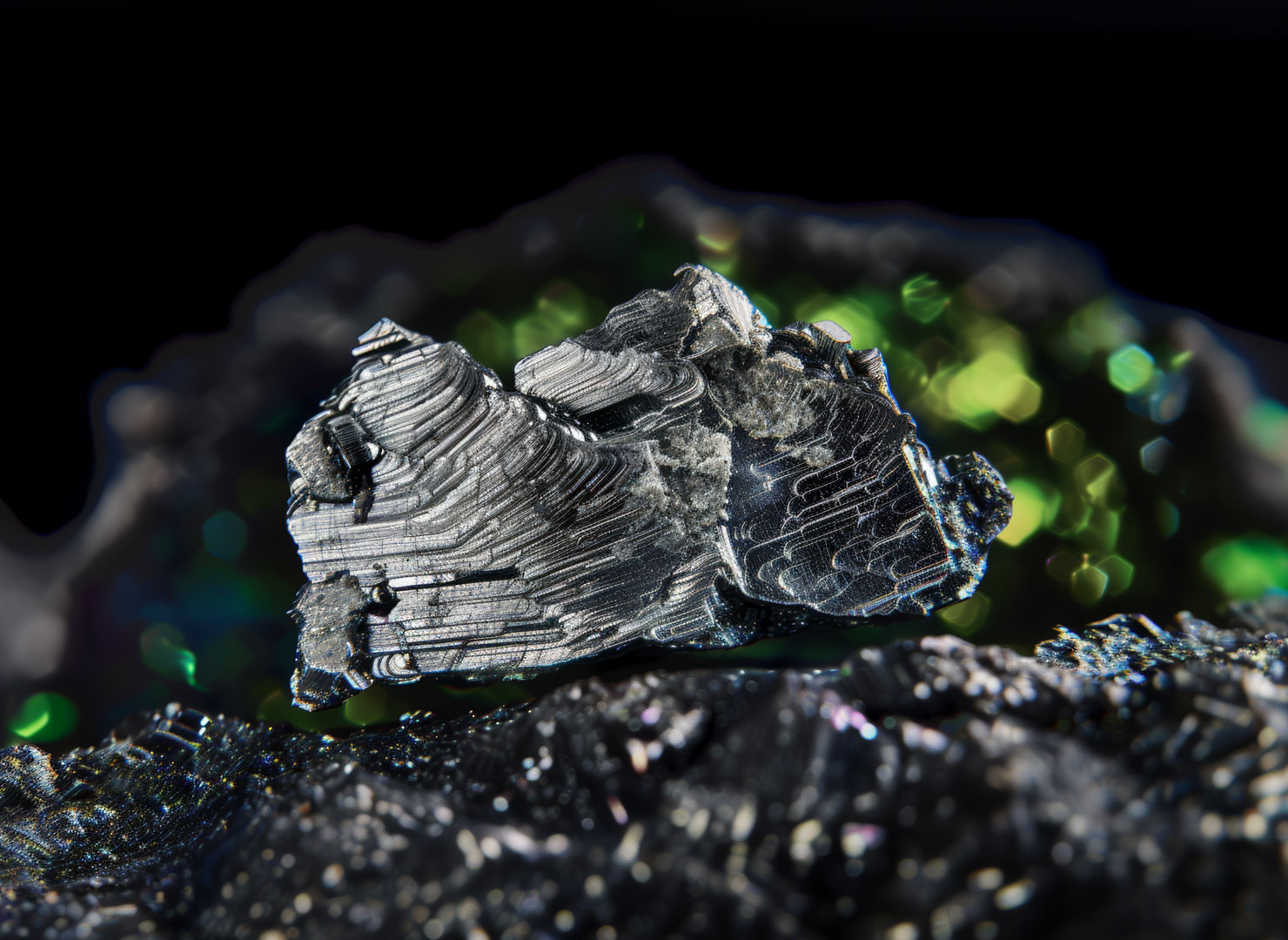The Element Thulium
On this page you can find out more about the rare earth element
Name: Thulium
Symbol: Tm
Ordinal number: 69
Density: 9,32 g/cm3
Melting point: 1.545 °C
Boiling temperature: 1.947 °C
Thulium is one of the lanthanidesA group of 15 elements with chemically very similar properties. in the periodic table.
Introduction
Thulium: Unique Rare Earth Element With Highly Specialized Applications
Alongside promethium, thulium is the rarest of the lanthanides. The element is only used in a few highly specialized technologies.

Discovery of Thulium: From Sweden via Great Britain to Germany
The Swedish chemist Per Teodor Cleve discovered thulium in 1879 while investigating erbium oxide. He isolated two substances from it. He called one of them holmia, which is the oxide form of the element later known as holmium. He gave the other substance the name thulia. However, this thulium oxide was not pure but contained ytterbium oxide, which Cleve was unable to separate completely. This separation was only achieved in 1911 by the British chemist Charles James. Elemental thulium was first obtained in 1936 by the German chemists Wilhelm Klemm and Heinrich Bommer. Thulium was named after an old name for Scandinavia, Thule.
Main areas of application for thulium

The Discoverer of Thulium
Per Teodor Cleve was born in Stockholm in 1840. In addition to his work as a chemist, Cleve also devoted himself to oceanography, where he made significant discoveries. His greatest success in chemistry was the discovery of the rare earth elements holmium and thulium.
Characteristics
Flexible and Abundant
Thulium is a silver-grey rare earth metal that is soft at room temperature and can be easily stretched and forged. Thulium is the rarest lanthanide after promethium, which only occurs in nature as a by-product of radioactive decay processes. However, thulium is more common in the earth’s crust than gold or platinum, for example.
Areas of Application
Making Banknotes Forgery-Proof
Thulium is mainly used in highly specialized applications – for example, in high-precision medical lasers, which serve as scalpels in surgery. Because it glows bluish under UV light, thulium is also used in some banknotes as an anti-counterfeiting measure. The isotope, which is extracted from nuclear reactors, is also used as a source of X-ray radiation, particularly in portable X-ray machines for medical applications.

Medical Technology
Rare earths are used in medical diagnostic and treatment technologies, including X-ray machines, MRI machines, nuclear medicine, prostheses, implants, and medical lasers.
Learn more

Laser
Laser beams are concentrated electromagnetic waves. They have various applications in industry, medicine, and the military. Lasers enable high-speed Internet through optical fibers.
Learn more

Lighting
Rare earths are used to produce classic fluorescent tubes, modern energy-saving lamps, and LED lights. The raw materials are also used in devices with picture tubes, tablets, and smartphones, where they produce red pixels.
Learn more

Nuclear Power
Nuclear reactors generate energy by splitting atomic nuclei. Nuclear power is currently making a comeback in many countries. This trend could further increase the demand for rare earths, some of which are used in reactor control rods.
Learn more
Deposits
Strong Geographical Concentration Could Influence Supply Chains
Thulium belongs to the subgroup of heavy rare earths, which are mainly extracted from so-called ion adsorption clays, which are currently only mined in southern China and neighboring Myanmar. Heavy rare earths occur less frequently in the earth’s mantle and are correspondingly more expensive than light rare earths. In addition to clays, monazite, xenotime, and euxenite minerals with low thulium concentrations are mined in various countries.
The map shows the regions of the world where heavy rare earths are mainly mined.

Low Annual Production
As the areas of application only require small quantities of thulium, the German Mineral Resources Agency DERA does not currently consider the supply of the element to be critical. This could change with as new fields of application come onstream. The annual production volume of thulium is correspondingly low; however, as with all heavy rare earths, production is highly concentrated geographically, which is why global supply chains are susceptible to interruptions.
Raw Materials Trading Industrial Customers
TRADIUM trades in all industrially relevant rare earth oxides. Choose from a wide range of specifications and take advantage of the option to reserve batches for the long term.
Purchase of Physical Assets for Private Customers
Benefit as a private customer from the exciting market for rare earths as a physical asset. You can find out here what opportunities TRADIUM offers and what tax advantages a purchase of raw materials entails.